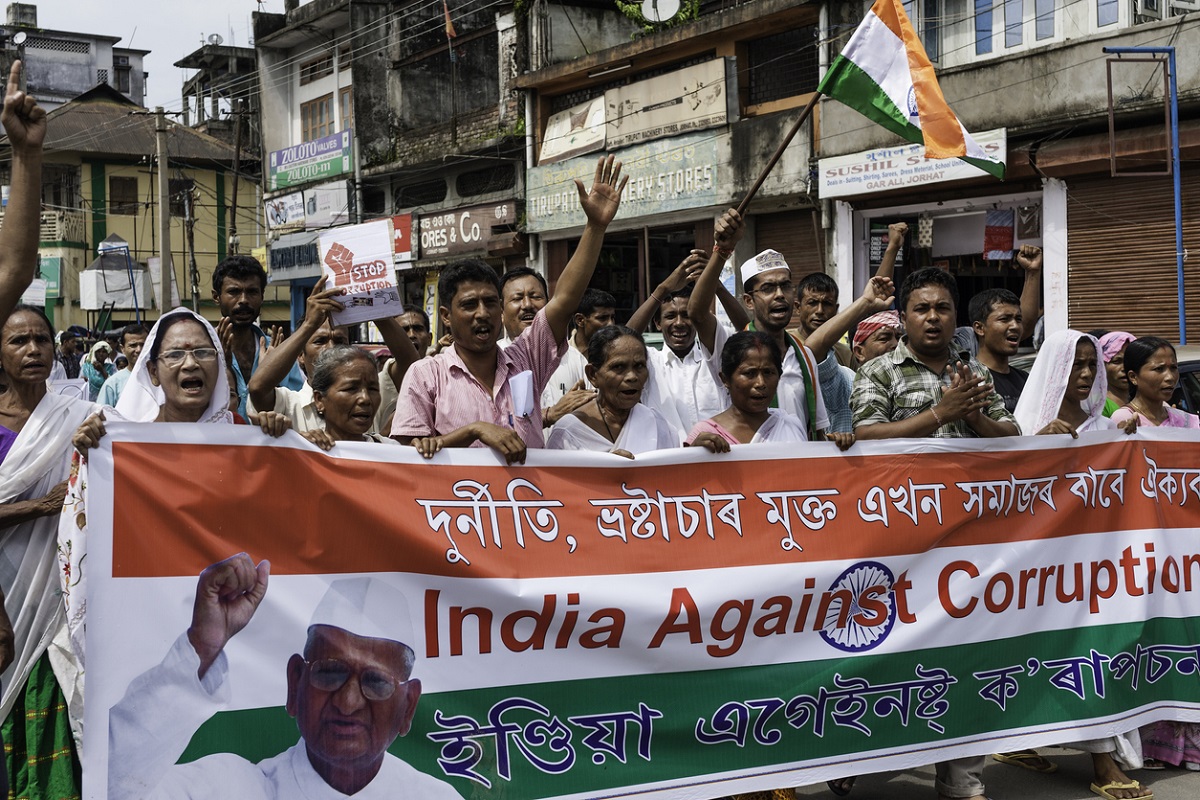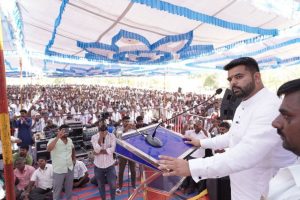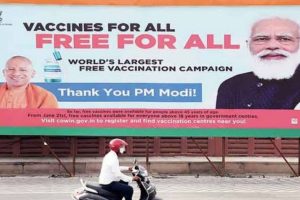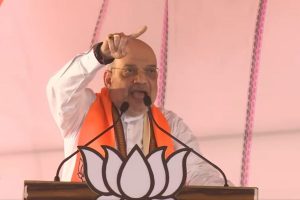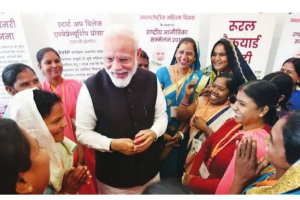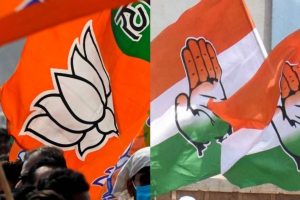The unprecedented pandemic-induced tragedy in our country has taken a grievous toll of our leaders’ credibility; statements designed to gloss over failures, like the persistent denial of Covid-19 equipment shortages and the fabricated tally of daily Covid deaths or the assertion that there had been no Chinese intrusion into Indian territory, all reduced trust in statements of Government spokesmen to near zero.Instances of high functionaries caught on the wrong foot abound.
A newspaper report pointed out that while 58,000 deaths had been recorded in Gujarat from 1 March 2020 to 10 May 2020, 1,23,000 deaths were recorded in the same period in 2021, but according to Government statistics, Covid-19 mortality was only 4,218 during this period. The minister concerned struggled to explain this glaring discrepancy. Then, the number of dead bodies found floating in the Ganga are many times of the official Covid-19 death toll in UP.
We can, however, console ourselves that a similar charge was made against the US Administration – probably bureaucrats are the same the world over. While presenting Budget 2021 as the Budget of the century, the Finance Minister grandly announced that expenditure on ‘Health and Wellbeing’ was being hiked by 137 per cent, from the earlier year’s expenditure of Rs 94,452 crore, to Rs 2,23,846 crore in 2021-22. What the FM did not mention was that out of the incremental sum, Rs.38,512 crore was the increased allocation to the Water and Sanitation Department (WSD) and Rs 36,022 crore was the Finance Commission grant to the WSD.
The FM also included another grant of Rs 13,192 crore to States by the Finance Commission in the Health Budget. Reading the fine print in the Budget reveals a particularly unkind cut ~ the Rs 35,000 crore allocated for vaccination against Covid-19, are not budgeted as Central Government expenditure but merely as part of the resources allocated to States! Perhaps, Government claims are so far removed from reality that it takes little to shatter the makebelieve statistics, so assiduously peddled by bureaucrats. Be that as it may, outcome of Government schemes is seldom proportionate to expenditure; the size of the Union Budget has tripled every ten years, with Budget Expenditure increasing from Rs 3.38 lakh crore in 2000 to Rs.11.08 lakh crore in 2010, and to Rs 34.83 lakh crore in 2020, but the moot question is whether this increased expenditure has resulted in commensurate benefits to the public?
The time is definitely ripe to infuse a touch of reality to Government functioning. The present rout of the healthcare system, when thousands died without proper treatment is difficult to countenance, given the fact that lakhs of crores of rupees had been spent over the years on public health services. Mismanagement and outright corruption are the culprits that have prevented the Government from obtaining ‘bang for the buck’ spent by it. To recapitulate, there have been myriad recorded instances where funds meant for augmenting health and other infrastructure simply disappeared, without any trace.
For example, huge allocations were made to various states under the National Rural Health Mission (NRHM); after a series of murders of top health officials in UP in 2010, it was noticed that a sum of around Rs 10,000 crore had been defalcated from NRHM funds. Even after a decade, none of the misappropriated funds had been recovered and none of the murderers had been brought to book. Neither has there been any significant improvement in healthcare services. Similarly, according to the Economic Survey 2012, Maharashtra’s irrigation potential increased by only 0.1 per cent during the years 1999 to 2009, even after Rs 70,000 crore had been spent on various irrigation projects.
It is not difficult to guess where such money goes; according to the latest report of Transparency International, India has the highest bribery rate in Asia. The large number of such instances should be an adequate warning to planners not to allocate funds till the exact use of the funds had been decided upon and guidelines for execution and monitoring have been drawn up. However, such pedestrian advice is anathema to our planners who believe both in the Soviet concept of centralisation and the American concept of ‘bigger the better.’
Given the great diversities in our economy and country, planning from ‘bottom up’ may prove better, that is each constituent unit is functionally autonomous and plans its own performance and expenditure, which is aggregated to arrive at the total requirement of the entire department. This approach would fix responsibility for non-performance and would reduce delays, and probably expenditure also. Projects executed with this approach would have a greater chance of success because both the authorship and the responsibility of implementation would be with the same set of people.
As a first step, the Government could improve the quality of healthcare and education by handing over Government hospitals and Government schools to able administrators, with sufficient funds and powers, with a mandate to bring them up to a predetermined standard. Presently, each Government Department and Ministry has scores of projects running simultaneously. Budget allocations are made in a way that some projects hibernate while others are speeded-up. For example, while we wait for regular train services to start, eight trains were flagged off from Kevadia in Gujarat to various destinations on a single day – one with a Vistadome coach, a novelty for Indian Railways.
Due to such irrational practices, projects are seldom completed on time. A recent concept paper circulated by the Central Vigilance Commission noted that over 80 per cent of public projects were running behind schedule. The paper further noted that the quality of various public projects was a “major area of concern.” Needless to add, project delays result in massive cost overruns. Contrast it with the way the Chinese execute projects. Recently, a 1,500-bed hospital for Covid patients came up in five days in Nangong. To control time and cost overruns we can emulate Chinese efficiency, condensing the timeline of all Government projects to one year, which would also ensure better monitoring.
For projects that really require more than a year’s time, definite yearly targets could be set. The Government needs to curb its wasteful expenditure to fund the much-needed revamp of the social sector, particularly the education and healthcare sectors. A small example of wasteful expenditure would suffice. According to Budget Estimates for the current year, an expenditure of Rs 12.28 lakh crore is earmarked for more than 160 Schemes of the Central Government.
The cryptic and incomplete, “Output Outcome Framework 2020-21 for Major Central Sector and Centrally Sponsored Schemes,” is the only publicly available review of the Central Schemes. The bureaucratese of this document is unable to hide the fact that many flagship government schemes are floundering. For example, the review of Pradhan Mantri Fasal Bima Yojana (PMFBY), shows that in addition to farmers’ contribution, the Government paid Rs 15,695 crore to insure the crops of 5.64 crore farmers for Rs 2,35,277 crore but only 28 per cent farmers received the sum claimed under the Yojana.
Probably, insurance companies profited more than farmers from PMFBY. Significantly, the outcome of government schemes is evaluated by the same persons who implement those schemes. As things stand, old schemes are renamed, sometimes disparate schemes are merged in one another, schemes are introduced/discontinued, with no proper study on the outcome or the reason for the success or failure of the scheme. Considering the huge sums involved, as a first step, all government schemes should be independently audited with unproductive schemes being axed and others being suitably modified. The Finance Commission has also suggested a review of government schemes.
To sum up, the huge gap between planning and implementation, has ensured the failure of most Governmental initiatives. Additionally, government schemes are premised on the assumption that Government employees would do their part diligently and honestly. But Government employees believe that their role is restricted to writing notes on files and making some moolah on the side. It is time to introduce modern management practices in working and to disabuse Government employees of the notion that their employment is a sinecure.
Finally, humongous but unmonitored Government spending will not provide a panacea for our economic problems. Martin Feldstein, the renowned American economist, had succinctly observed: “Increased government spending can provide a temporary stimulus to demand and output but in the longer run higher levels of government spending crowd out private investment or require higher taxes that weaken growth by reducing incentives to save, invest, innovate, and work.”
(The writer is a retired Principal Chief Commissioner of Income-Tax)

